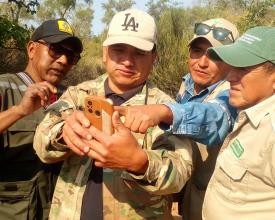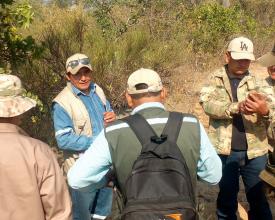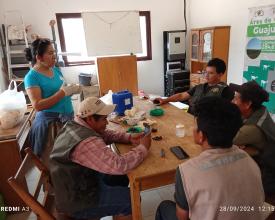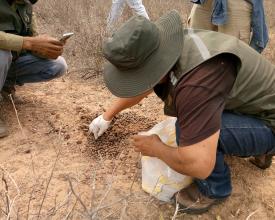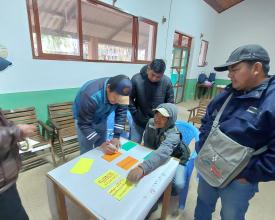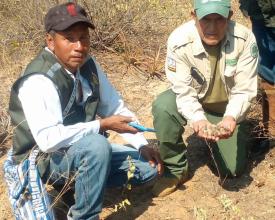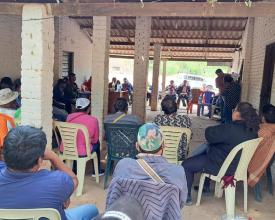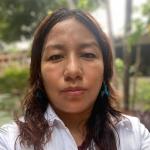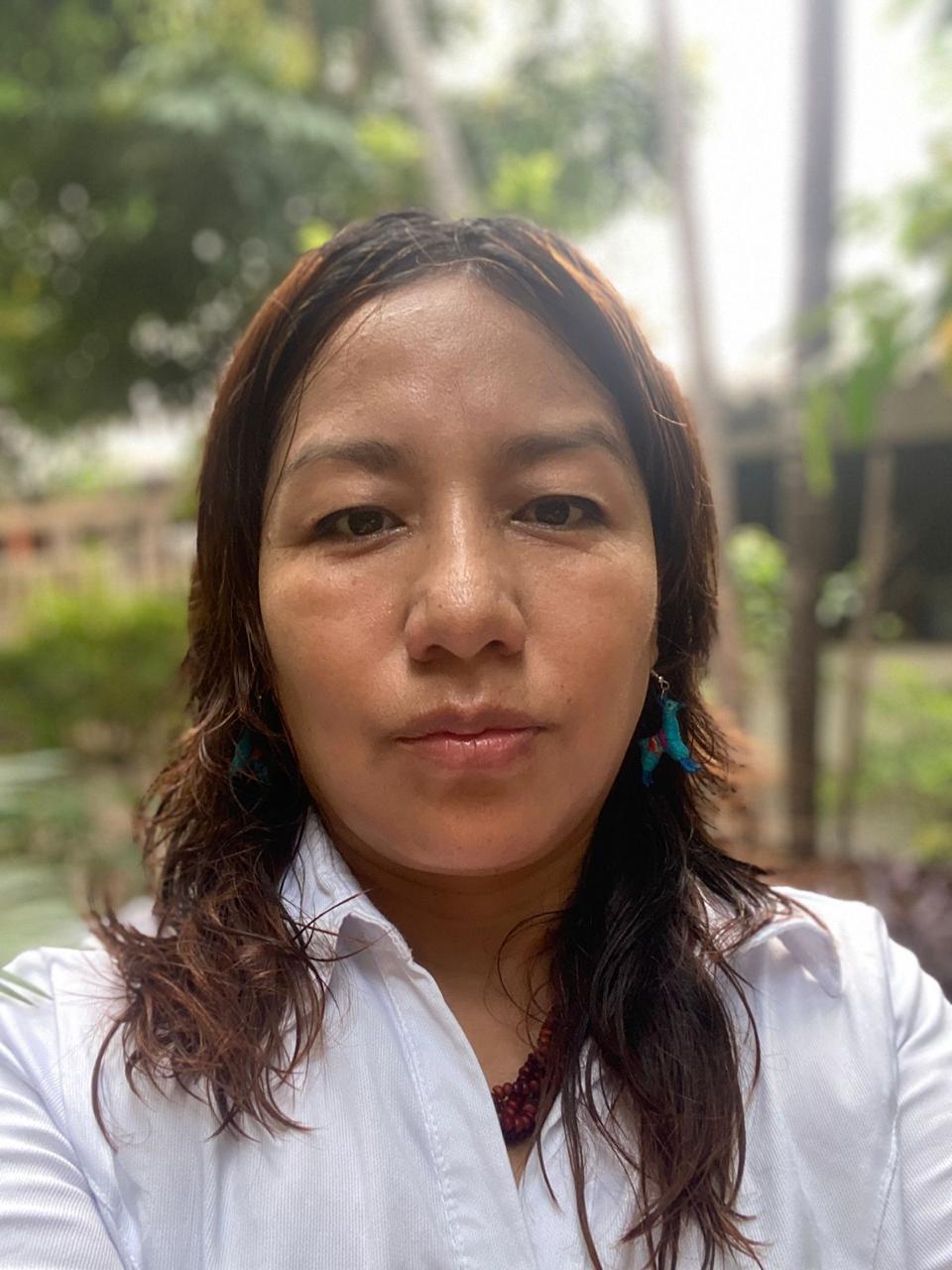
Technology with Roots: Guarani indigenous guardians, safeguarding the guanaco and their collective territories
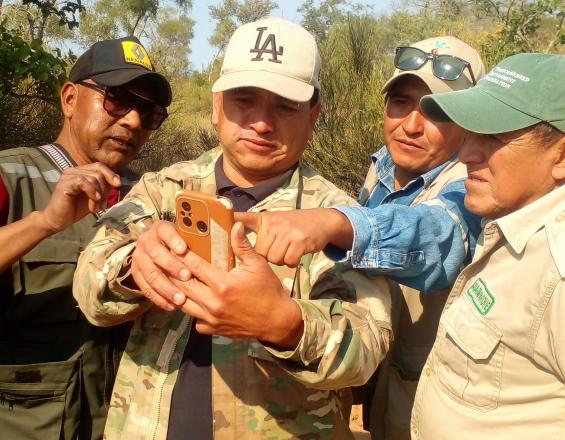
In the Guajukaka Life Area, a protected area of the Charagua Iyambae Guaraní Indigenous Autonomy, with an area of 284,670 ha, 10 Guaraní community guardians are leading an innovative solution to conserve the Chaco guanaco(Lama guanicoe), a keystone species for biodiversity. They combine traditional knowledge with advanced technology such as camera traps and the SMART system, which allows monitoring without an internet connection, collecting critical data on habitats and threats such as poaching. In addition, DNA studies of the species are being promoted, with training led by Fundación Natura Bolivia. The results strengthen community leadership, generate key data for sustainable management and reaffirm the Guaraní identity, inspiring models that can be replicated in other protected areas.
Context
Challenges addressed
The Guajukaka Life Area in Alto Isoso faces increasing challenges to conserve the Chaco guanaco(Lama guanicoe). At the climatic level, prolonged drought and rising temperatures threaten the availability of water and forage, directly affecting the species. At the ecological level, the advance of invasive vegetation is reducing the open pampas, a key habitat for the guanaco. Socially, work is being done to strengthen Guaraní indigenous governance, promoting community participation and leadership, although challenges persist in terms of awareness and social cohesion. Financially, financial sustainability is a challenge: the lack of long-term funds to remunerate the guards limits the continuity of monitoring, although the autonomous government is progressively assuming this commitment. Compensation to guardians also contributes to reducing rural poverty and reinforces conservation with social justice.
Location
Process
Summary of the process
In the Guajukaka Life Area, the conservation of the Chaco guanaco combines territorial governance, technology and traditional Guarani knowledge in an innovative and sustainable approach. Local communities, led by captains from Alto Isoso, use tools such as the SMART application, the collection of individuals' feces to identify the DNA of the species and contribute to the improvement of the species' status. The technical training of the community guardians strengthens their capacities, while reinforcing their cultural identity. This process is organized through strong local governance that unites traditional knowledge with modern technology, creating a culturally relevant model. In addition, environmental awareness initiatives involve the community, highlighting the ecological and cultural value of the guanaco, which encourages cooperation and active vigilance. These interconnected factors have reduced threats to the species, strengthened the social fabric and generated a replicable model for other protected areas, demonstrating the power of integrating tradition, technology and community engagement.
Building Blocks
Guarani roots and wisdom
This approach reinforces cultural identity, empowers local stakeholders as guardians of their territory and establishes effective governance based on respect for the environment and community decisions. This model is adaptable to other protected areas where the active participation of local communities is key to sustainability.
The Guaraní have lived with nature for hundreds of years. Monitoring makes it possible to maintain and revalue the local knowledge of the Guaraní population.
Enabling factors
- Traditional Knowledge: The integration of Guaraní ancestral knowledge with modern management approaches strengthens the cultural connection and understanding of the territory.
- Cultural Identity: Pride in their Guaraní heritage motivates communities to lead the conservation of their territory.
Lesson learned
The active participation of communities and the integration of traditional knowledge strengthen territorial management. Participatory processes reinforce cultural identity and ensure inclusive decisions. Training local leaders empowers communities and demonstrates that knowledge-based governance is key to sustainability.
SMART Technology for Monitoring and Surveillance
The second block incorporates technology adapted to the local context to improve biodiversity monitoring and surveillance. Basic telephone equipment is used together with the SMART application, an innovative tool that allows data to be recorded, analyzed and prioritized without the need for an internet connection. Community guardians are trained to operate this tool, collecting key information on the status of guanaco populations and threats such as poaching. This approach combines accessible technology with community leadership, promoting evidence-based conservation and optimizing resources. The simplicity and effectiveness of this block make it replicable in other territories with limited resources and similar conservation challenges.
In addition to the assessment of vertebrate biodiversity, the DNA of the species is carried out in order to improve the species' condition. The SMART, camera traps and DNA are integrated into the protected area's integrated participatory monitoring system. The DNA is from the species, which is collected from its feces. To carry out the population assessment. The community guardians collect the samples and are trained to collect the samples.
Enabling factors
- Technological Accessibility: Use of simple telephone equipment, compatible with the SMART application, adapted to the rural context (https://smartconservationtools.org/en-us/).
- Technical Training: Practical training of community guardians to use the tool effectively.
- System Adaptability: SMART works without the need for internet connection, an advantage in remote areas such as Alto Isoso.
- Evidence-Based Data Collection: The application allows prioritization of conservation actions based on concrete information.
- Institutional Support: Fundación Natura Bolivia provides tools and training, facilitating the implementation and sustainability of this technology.
Lesson learned
Accessible technology, such as SMART, combined with training, allows local communities to collect valuable data for conservation. Tools adapted to the rural context are effective and replicable. Institutional support is crucial to ensure sustainability and strengthen evidence-based decision making, improving biodiversity monitoring.
Resources
Territorial governance
This block focuses on strengthening community governance in the Guajukaka Life Area, led by the Guaraní communities of Alto Isoso. Through participatory processes, the captains and their technical teams implement territorial management that links traditional knowledge with modern tools. Through workshops and mapping activities, the communities deepen their knowledge of the territory, identifying critical areas for biodiversity and prioritizing conservation actions. as part of this territorial effort, the Management Initiation Plan (PIG) of the Guajukaka Life Area is elaborated, identifying priority actions for five years in the territory. At the level of the Charagua Iyambae Indogena Autonomy, its Protected Areas Law is enacted.
GAIOC is considering assuming part of the incentive for community guardians. Currently, Fundación Natura Bolivia is assuming the estimated budget for 10 guardians per month for remuneration, operations and logistics of the guardians of the forest is 18,300 bs, approximately 2,500 USD at the current Bolivian exchange rate.
Enabling factors
- Community Participation: The active involvement of the Guaraní communities, led by their captains and technical teams, ensures a genuine commitment to territorial management. The selection of community guardians is carried out by the organizational territorial entity and its bases (communities). The guardaines are related to biodiversity conservation and knowledge of their territory. Fundación Natura Bolivia provides training in the technology used.
- Participatory Processes: Workshops, mapping and activities that promote collective learning and inclusive decision-making.
- Continuous Training: Training in territorial management and conservation strategies that empower local stakeholders.
- Territorial regulations: The Autonomous Indigenous Government of Charagua Iyambae enacted a law regarding protected areas in its territory.
- Institutional framework: It has incorporated a protected areas directorate into its organizational chart, as well as visualized the protected area managers and community guardians.
- Protected area management plan: The management plan includes the Chaco guanaco (Lama guanicoe) as a conservation target species. It also incorporates the role of community guardians. The plan has been approved in assembly by the communities.
Lesson learned
Impacts
In the Guajukaka Life Area, significant impacts have been achieved in the conservation of the Chaco guanaco and in the social strengthening of the Guaraní communities. The monitoring carried out by community guardians has increased knowledge about the distribution of the species, identifying five breeding units of solitary (Parachoerus wagneri) and confirming the presence of groups of guanacos whose continuity in the area was uncertain. These guards have become the first line of alert against threats in Guajukaka, such as poaching or habitat degradation, ensuring an early and effective response.
Socially, ten Guaraní community guardians have been trained, strengthening both their cultural identity and their technical skills for the protection of their territory, and through this intervention they have been able to enter the "forest my first job" scheme. This process has allowed the communities to enter into broader territorial governance spaces, integrating traditional knowledge and modern tools. This model strengthens the social fabric and indigenous autonomy, inspiring replicability in other regions. The estimated budget for 10 guardians per month for travel expenses, operational remuneration and logistics of the guardians of the forest is 18,300 bs, approximately 2,500 USD at the current Bolivian exchange rate.
Beneficiaries
Guaraní indigenous community members of Alto Isoso, Charagua, who efficiently manage their natural territories.
Additionally, explain the scalability potential of your Solution. Can it be replicated or expanded to other regions or ecosystem?
The solution has high potential for scalability. The combination of camera traps, SMART and community participation can be adapted to other indigenous territories and similar ecosystems, promoting the conservation of key species. Its inclusive and cost-effective approach facilitates replication, strengthening local governance and sustainability in subnational protected areas.
Fundación Natura Bolivia is not only implementing the community-based resguardo in the Guajukaka Life Area, but in 24 other subnational protected areas in Bolivia. Guajukaka has been the pilot and has been the pioneer in adoption by the people and GAIOC itself.
Global Biodiversity Framework (GBF)
Sustainable Development Goals
Story
The Guajukaka Life Area (284,670 ha), located in one of the most remote areas of the Charagua Iyambae Autonomy in Bolivia, was almost inaccessible when it was declared a protected area in 2019. Its creation was the first step in conserving a unique ecosystem, home to the guanaco, a keystone species for the region. However, legal protection was not enough. The real challenge was to establish effective management to protect biodiversity, including other vertebrate species at risk.
From the first meetings with the Guaraní communities, it became clear that species monitoring was essential. But distance and lack of internet made this work difficult. It was then that the idea of using technology to overcome these barriers arose. After evaluating several alternatives, SMART (Spatial Monitoring and Reporting Tool) was chosen as the best option. This system did not require the internet and allowed key data to be recorded and the effort of the guards to be measured, even in difficult terrain.
SMART helped indigenous communities combine technology with their ancestral knowledge. With this tool, they began to more accurately monitor the guanaco and other species. The data collected provided a better understanding of their distribution and population status. Camera traps and digital records provided key information on wildlife movements and health, which improved management of the area.
Although SMART was already being used in other countries, Guajukaka was the first in Bolivia to implement it. Its success motivated other protected areas to do the same. This pilot experience not only improved species conservation, but also empowered the communities, who now have an active role in the care of their territory.

